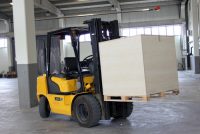Category: Special Topics in Safety Management
Safety is a process, and as such, needs to be managed. This section offers resources to create a viable safety program, sell it to senior management, train supervisors and employees in using it, and then track and report your progress. Look also for ways to advance your own skills in these areas, both for your current job, and those that follow.
Yesterday, we talked about the foundations of workplace safety. Today, we highlight the safety foundations of a special workplace—the construction site of the London Olympics. The Institution of Occupational Safety and Health (IOSH), a global safety organization, says companies can learn a lot from the safety and health success of the Olympic building effort in […]
When constructing a building, a good foundation is essential for a safe and solid structure. It’s the same with workplace safety. You need good foundations on which to build effective safety programs. What are the foundations of safety in your workplace? This is a very important question, and your answer is even more important. Today, […]
Legal use of marijuana for medical purposes raises important and difficult questions for employers. Although only some states have legalized use, the issue is likely to become more widespread over time. In a recent Safety.BLR.com poll, safety professionals were asked, "Should medical marijuana use in the workplace be a concern for employers?" 80% said yes, […]
According to OSHA, 1 in 15 forklift-related accidents are caused by improper maintenance. A thorough preoperational inspection will identify maintenance problems before they cause an accident. Making sure a forklift is safe to operate is an important part of forklift safety training. Operators must be trained to inspect their lift trucks effectively to ensure safe […]
There are numerous hazards associated with forklift operations. Do your operators know about these four common forklift hazards and how to avoid them? If not, they are at risk for forklift accidents, which can result in injuries, damage, or even death. 4 Forklift Hazards Attachments Pedestrians Work environment Loads Attachments Forklift attachments such as carton […]
Yesterday, we presented the first 5 of 10 guiding principles for improving business value and EHS performance. Today, we conclude with the remaining 5 principles. 6. Involve Employees in a Bottom-Up Program Almost all process improvement programs are operated in a top-down mode. This is a result of the emphasis placed on a management technique […]
Companies large and small are under increased pressure to improve their business value and EHS performance. Here are 10 guiding principles that can help. Pressures to improve business value and EHS performance stem from such factors as intensified marketplace competition, expanded expectations for shareholder return, technological change, and the introduction of management practices emphasizing quality […]
Here’s a checklist developed by NIOSH to help you evaluate your hearing conservation program. Use it to benchmark your progress and identify where improvement is needed. Training and Education Has hearing protection training been conducted at least once this year? Is the training delivered by a qualified instructor? Was the success of each training program […]
Every year 30 million people are exposed to hazardous noise on the job, and thousands suffer from preventable work-related hearing loss. Now, some innovative technology comes to the rescue and helps protect workers in noisy environments. For example, at 3M’s Hutchinson, Minnesota, facility, a 2012 Safe-in-Sound award winner, workers undergo annual fit testing, using 3M’s […]
Here’s a company that emphasizes safety at its customer contact center and has achieved remarkable results. Last fall, United Airlines’ Detroit Customer Contact Center was named a Star VPP worksite by Michigan OSHA. It was the first Voluntary Protection Program (VPP) certification for United Airlines. Kerry Fischman, senior staff specialist for corporate ground safety, says […]

